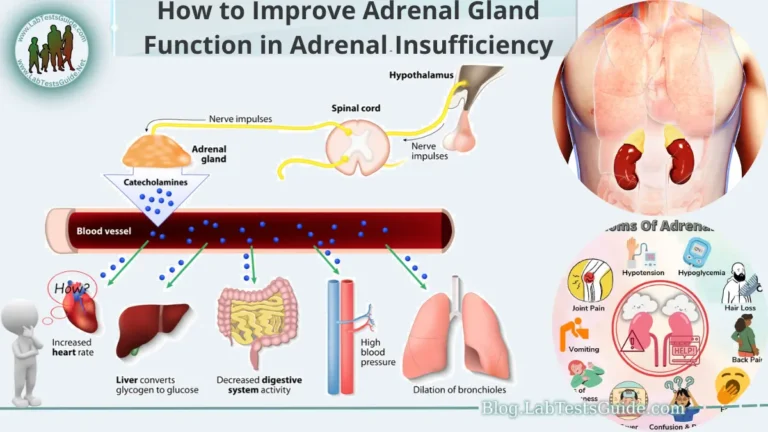Quitting smoking is one of the most transformative decisions an individual can make for their health and well-being. Cigarette smoking is a significant risk factor for numerous serious health conditions, including lung cancer, heart disease, and respiratory disorders. Breaking free from the grip of nicotine addiction is not an easy task, but the benefits of quitting are immense and far-reaching. In this comprehensive guide, we will explore practical strategies, tips, and resources to help you embark on a successful journey toward becoming smoke-free.

Understanding the importance of quitting smoking is the first step in this transformative process. Beyond the obvious health hazards, smoking affects not only the smoker but also those around them through secondhand smoke exposure. Throughout this guide, we will delve into the various aspects of smoking cessation, from preparation and planning to coping with triggers and cravings. By empowering yourself with knowledge and building a strong support system, you can increase your chances of quitting smoking for good and reclaiming a healthier, smoke-free life. Remember, this journey might have its ups and downs, but with determination and the right tools, you can overcome the challenges and embrace a brighter, smoke-free future.
What Is Smoking Cessation?
Here are some key points to understand about smoking cessation.
- Health Benefits: Quitting smoking has numerous health advantages, such as reducing the risk of lung cancer, heart disease, stroke, respiratory issues, and other smoking-related conditions.
- Nicotine Addiction: Smoking is not only a habit but also an addiction to nicotine, a highly addictive substance found in tobacco. Overcoming this addiction is one of the primary challenges in smoking cessation.
- Secondhand Smoke: Smoking not only affects the smoker but also exposes those around them to harmful secondhand smoke, increasing their health risks as well.
- Withdrawal Symptoms: When someone quits smoking, they may experience withdrawal symptoms like irritability, cravings, difficulty concentrating, and increased appetite. These are temporary and usually subside over time.
- Personalized Approaches: Different individuals may find success with various quitting methods, such as cold turkey, nicotine replacement therapy (NRT), medications, counseling, or a combination of strategies.
- Importance of Support: Having a support system, whether from friends, family, support groups, or healthcare professionals, can significantly increase the chances of successful smoking cessation.
- Relapse: It’s essential to recognize that relapses can happen during the quitting process. If this occurs, it’s important not to get discouraged but rather learn from the experience and recommit to quitting.
- Long-term Benefits: The benefits of quitting smoking extend beyond improved health. It can lead to financial savings, enhanced sense of taste and smell, better physical fitness, and improved overall well-being.
- Smoking Cessation Resources: Various resources, such as quitlines, online support communities, mobile apps, and self-help materials, are available to assist individuals in their smoking cessation journey.
- Celebrating Success: Acknowledging and celebrating milestones along the way can reinforce positive behavior and provide motivation to continue the smoke-free lifestyle.
How to Create a Quit Plan:
Here’s a step-by-step guide on how to create an effective quit plan.
- Set a Quit Date: Choose a specific date within the next few weeks to quit smoking. Having a clear target date will help you mentally prepare for the change.
- Identify Triggers: Pay attention to situations, emotions, or activities that prompt you to smoke. Common triggers include stress, social gatherings, or certain places. Knowing your triggers will allow you to develop coping strategies.
- Set Clear Goals: Define your reasons for quitting and establish clear, achievable goals. Whether it’s improving your health, saving money, or setting a positive example for loved ones, having a strong motivation will keep you focused.
- Choose a Quitting Method: Research different quitting methods, such as quitting cold turkey, using nicotine replacement therapy (NRT), or seeking medication support. Select the approach that aligns best with your preferences and needs.
- Build a Support System: Inform friends, family, and colleagues about your decision to quit smoking. Seek their support and encouragement throughout your journey. Consider joining a support group or using smoking cessation apps for additional assistance.
- Coping with Withdrawal: Understand that withdrawal symptoms are normal as your body adjusts to being nicotine-free. Develop coping strategies, such as engaging in physical activity, deep breathing exercises, or finding new hobbies, to manage these challenges.
- Avoid Triggers: Where possible, steer clear of situations that trigger the urge to smoke. Modify your routine to reduce exposure to these triggers, especially during the initial stages of quitting.
- Create Healthy Alternatives: Replace smoking with healthier habits, such as chewing sugarless gum, snacking on fruits and vegetables, or going for a walk when cravings strike.
- Seek Professional Help: Consider talking to a healthcare professional or counselor who specializes in smoking cessation. They can provide personalized advice and support tailored to your needs.
- Stay Positive and Persistent: Be patient with yourself and stay positive throughout the quitting process. If you experience setbacks, don’t give up. Learn from each experience and keep moving forward.
- Reward Yourself: Celebrate milestones and achievements during your smoke-free journey. Treat yourself to something you enjoy, reinforcing the positive behavior of quitting smoking.
Getting Support:
Here are some key points on how to get the support you need during your quitting journey.
- Inform Friends and Family: Share your decision to quit smoking with your close friends and family. Their understanding and encouragement can make a significant difference in your motivation and determination.
- Join a Support Group: Consider joining a smoking cessation support group, either in-person or online. Connecting with others who are going through a similar experience can provide a sense of camaraderie and understanding.
- Seek Professional Help: Reach out to healthcare professionals or counselors who specialize in smoking cessation. They can offer personalized guidance, recommend quitting methods, and provide strategies to cope with withdrawal symptoms.
- Utilize Smoking Cessation Apps: There are various mobile apps designed to support individuals in their journey to quit smoking. These apps often offer helpful tools, progress tracking, motivational messages, and tips to manage cravings.
- Participate in Quitlines: Many countries offer smoking cessation helplines that provide free support and advice to those trying to quit. Trained counselors can assist with quitting strategies and provide motivation.
- Engage in Online Communities: Look for online forums or social media groups dedicated to quitting smoking. Sharing your experiences and reading about others’ success stories can be inspiring and informative.
- Involve Your Doctor: Inform your healthcare provider about your decision to quit smoking. They can offer medical guidance, monitor your health progress, and provide support tailored to your specific needs.
- Lean on Quit Buddies: Find a friend or family member who also wants to quit smoking and become quit buddies. Supporting each other can make the journey less lonely and more enjoyable.
- Be Open to Family Therapy: If your family members also smoke, consider attending family therapy sessions together. This can help foster understanding, support, and a smoke-free environment at home.
- Celebrate Supportive Allies: Surround yourself with people who are supportive of your decision to quit smoking. Avoid spending time with individuals who may encourage you to smoke or dismiss your efforts.
Managing Triggers and Cravings:
Here are essential points on how to manage triggers and cravings during your smoking cessation journey.
- Identify Your Triggers: Pay close attention to situations, emotions, or activities that make you crave a cigarette. Common triggers include stress, social gatherings, specific places, or certain times of the day.
- Avoid Triggers When Possible: Where feasible, try to avoid situations or environments that trigger the urge to smoke. This may involve making changes to your routine or avoiding certain social settings during the early stages of quitting.
- Develop Coping Techniques: Have a toolkit of coping techniques ready to manage cravings. Deep breathing exercises, progressive muscle relaxation, and mindfulness meditation can be helpful in reducing stress and managing triggers.
- Distract Yourself: When a craving strikes, distract yourself with activities that keep your mind occupied. Engage in hobbies, go for a walk, listen to music, or try a puzzle to divert your attention away from smoking thoughts.
- Practice Delaying: If you experience a craving, practice delaying your response. Tell yourself you will wait for a few minutes before giving in to the urge. Often, cravings subside after a short period.
- Substitute Habits: Replace the act of smoking with healthier habits. Chew sugarless gum, snack on fruits or nuts, or sip water when you feel the urge to smoke.
- Exercise Regularly: Physical activity can help reduce stress and alleviate cravings. Incorporate regular exercise into your daily routine to improve your overall well-being and support your quit efforts.
- Create Smoke-Free Zones: Designate certain areas, such as your home or car, as smoke-free zones. This will help reinforce the commitment to quit and reduce the temptation to smoke in familiar settings.
- Reach Out for Support: Lean on your support system when you encounter strong cravings or challenging triggers. Talk to a friend, family member, or support group member to share your feelings and seek encouragement.
- Stay Hydrated: Drink plenty of water throughout the day. Staying hydrated can help reduce cravings and keep you focused on your goal.
- Visualize Success: Picture yourself as a non-smoker, enjoying a healthy and smoke-free life. Visualization can reinforce your determination and help you stay motivated.
- Be Kind to Yourself: Remember that managing triggers and cravings is a learning process. If you slip up, don’t be too hard on yourself. Instead, use the experience as an opportunity to learn and strengthen your quit plan.
Staying Motivated:
Here are important points on how to stay motivated during the process of quitting smoking.
- Remember Your Reasons: Regularly remind yourself of why you decided to quit smoking in the first place. Focus on the health benefits, the desire for a better quality of life, and the positive impact on your loved ones.
- Set Milestones: Break down your quitting journey into smaller milestones. Celebrate each achievement, whether it’s a day, a week, or a month without smoking. Acknowledging progress will reinforce your motivation.
- Visualize Success: Create a mental image of yourself as a non-smoker, enjoying a healthier and smoke-free life. Visualization can strengthen your determination and keep you focused on your goal.
- Use Affirmations: Repeat positive affirmations daily to boost your confidence and self-belief. For example, say, “I am in control of my choices and can overcome cravings,” or “I am becoming healthier and stronger each day.”
- Surround Yourself with Support: Spend time with friends and family who support your decision to quit smoking. Their encouragement and positive reinforcement will fuel your motivation.
- Find Inspiring Stories: Read success stories of others who have quit smoking. Knowing that others have overcome similar challenges can be motivating and inspire you to do the same.
- Engage in Physical Activity: Regular exercise can help reduce stress and improve your mood. Physical activity can serve as a healthy outlet for any pent-up frustration or cravings.
- Keep a Quitting Journal: Document your journey in a quitting journal. Write about your progress, challenges, and how you felt after overcoming cravings. This self-reflection can be empowering and inspiring.
- Reward Yourself: Treat yourself to small rewards when you achieve significant milestones in your quitting journey. Buy yourself something special or do an activity you enjoy to celebrate your success.
- Visual Reminders: Place visual reminders of your quit journey around you. These can be notes, images, or objects that symbolize your commitment to quitting smoking.
- Stay Educated: Continue learning about the benefits of quitting smoking and the risks associated with tobacco use. Understanding the positive impact on your health will motivate you to stay on track.
- Stay Positive: Embrace a positive mindset throughout your quitting journey. If you experience setbacks, don’t be discouraged. Instead, see them as opportunities to learn and grow.
Dealing with Relapses:
Here are key points on how to deal with relapses and get back on track.
- Acceptance and Forgiveness: Acknowledge that relapses can happen during the quitting process. Avoid self-blame and guilt, and instead, be kind to yourself. Understand that quitting smoking is a challenging journey, and setbacks are a natural part of the process.
- Identify Triggers: Reflect on the circumstances that led to the relapse. Identifying triggers or situations that contributed to the slip-up can help you better prepare for similar challenges in the future.
- Learn from the Experience: Treat a relapse as a learning opportunity. Analyze what triggered the relapse and what coping strategies may have been more effective in that situation.
- Revisit Your Quit Plan: Review your original quit plan and consider if any adjustments or additional support might be helpful moving forward. Modify your plan based on what you’ve learned from the relapse.
- Seek Support: Reach out to your support system, such as friends, family, or a support group. Discuss your experience openly, and seek encouragement and understanding from those who are rooting for your success.
- Reaffirm Your Goals: Remind yourself of the reasons you decided to quit smoking in the first place. Reconnect with your motivation and strengthen your commitment to a healthier, smoke-free life.
- Set a New Quit Date: If you’ve experienced a relapse, set a new quit date. Use the knowledge gained from the relapse to better prepare for potential challenges in the future.
- Modify Coping Strategies: Explore different coping techniques that may work better for you. Experiment with various methods to manage stress, cravings, and triggers.
- Stay Positive: Focus on the progress you made before the relapse rather than dwelling on the setback. Celebrate your achievements and use them as inspiration to move forward.
- Consider Professional Help: If you find it challenging to get back on track after a relapse, consider seeking support from healthcare professionals, counselors, or smoking cessation experts.
- Avoid All-or-Nothing Thinking: Remember that quitting smoking is a process, and slips are not the end of your journey. Embrace the progress you’ve made and commit to trying again.
- Don’t Give Up: A relapse does not define your ability to quit smoking. Stay committed to your goal, stay persistent, and keep trying until you achieve the smoke-free life you desire.
Healthy Lifestyle Changes:
Here are some essential healthy lifestyle changes to consider during your smoking cessation journey.
- Regular Exercise: Incorporate regular physical activity into your daily routine. Exercise not only helps manage stress and reduce cravings but also promotes cardiovascular health and boosts mood.
- Balanced Diet: Focus on eating a well-balanced diet rich in fruits, vegetables, whole grains, lean proteins, and healthy fats. Proper nutrition can enhance your immune system and aid in the healing process.
- Hydration: Drink plenty of water throughout the day. Staying hydrated supports overall bodily functions and can help reduce cravings.
- Limit Alcohol and Caffeine: Both alcohol and caffeine can be triggers for some individuals trying to quit smoking. Moderating your consumption may help you manage cravings better.
- Adequate Sleep: Aim for 7-9 hours of quality sleep each night. Sufficient rest is essential for physical and mental recovery, and it can help you cope with stress and cravings.
- Stress Management: Practice stress-reduction techniques, such as deep breathing, meditation, yoga, or spending time in nature. Reducing stress can help you avoid turning to smoking as a coping mechanism.
- Avoid Secondhand Smoke: Steer clear of environments where you may be exposed to secondhand smoke, as it can trigger cravings and hinder your progress.
- Seek Mental Health Support: If you’re experiencing emotional challenges during your quit journey, consider seeking professional mental health support or counseling.
- Stay Active and Engaged: Participate in activities that bring you joy and fulfillment. Engaging in hobbies and social activities can help distract from cravings and keep you motivated.
- Positive Self-Talk: Practice positive self-talk and affirmations. Remind yourself of your progress and reinforce the belief that you can achieve your goal of quitting smoking.
- Practice Mindfulness: Cultivate mindfulness and be present in the moment. This can help you recognize and manage cravings without giving in to them.
- Prioritize Self-Care: Take care of yourself emotionally, mentally, and physically. Engage in self-care activities that nurture your well-being.
Benefits of Quitting Smoking:
Here are some significant advantages of becoming smoke-free.
- Improved Respiratory Health: Within weeks of quitting, your lung function starts to improve, leading to better breathing and increased lung capacity. You may experience less coughing, wheezing, and shortness of breath.
- Reduced Risk of Serious Health Conditions: Quitting smoking significantly lowers the risk of developing serious health issues, including lung cancer, heart disease, stroke, chronic obstructive pulmonary disease (COPD), and other respiratory disorders.
- Cardiovascular Health: Your heart health improves after quitting smoking, reducing the risk of heart attacks and coronary artery disease. Your blood pressure and heart rate may return to healthier levels.
- Enhanced Circulation: Improved blood circulation leads to better oxygen delivery to your organs and extremities, supporting overall vitality and reducing the risk of peripheral vascular disease.
- Decreased Cancer Risk: Quitting smoking lowers the risk of various cancers, not only lung cancer but also cancers of the mouth, throat, esophagus, pancreas, bladder, and more.
- Rejuvenated Skin: After quitting smoking, your skin may look healthier, with improved complexion and reduced premature aging caused by the toxins in cigarette smoke.
- Better Oral Health: Quitting smoking contributes to healthier teeth and gums, reducing the risk of oral diseases such as periodontitis and tooth loss.
- Heightened Senses: Your senses of taste and smell improve, allowing you to savor food and experience aromas more intensely.
- Mental Health Benefits: Quitting smoking can positively impact your mental health. You may experience reduced stress, anxiety, and depression, leading to a better overall sense of well-being.
- Financial Savings: Smoking is an expensive habit. By quitting, you can save a significant amount of money over time.
- Improved Fertility: Quitting smoking can enhance fertility and increase the chances of successful conception for both men and women.
FAQs:
Why is quitting smoking important for my health?
Quitting smoking is crucial for your health because smoking is a leading cause of preventable diseases and serious health conditions. It significantly increases the risk of lung cancer, heart disease, stroke, respiratory disorders, and various other cancers.
What are the immediate benefits of quitting smoking?
The immediate benefits of quitting smoking include improved lung function, better circulation, reduced risk of heart attacks, and enhanced sense of taste and smell. Within just a few hours of quitting, carbon monoxide levels in the blood decrease, and within days, lung function starts to improve.
How can I prepare to quit smoking?
Preparing to quit smoking involves setting a quit date, identifying your triggers, building a support system, and choosing a quitting method that suits you best. Creating a quit plan with clear goals and coping strategies is essential for success.
What should I do when I experience cravings after quitting smoking?
When you experience cravings, distract yourself with activities, practice deep breathing or mindfulness, chew sugarless gum, or drink water. Delaying your response to cravings and finding healthy alternatives can help manage the urge to smoke.
What if I relapse and start smoking again?
Relapses are common during the quitting process. If you experience a relapse, be kind to yourself, learn from the experience, and use it as an opportunity to reinforce your commitment. Set a new quit date and modify your coping strategies if needed.
How can I stay motivated throughout my quitting journey?
Staying motivated involves reminding yourself of your reasons for quitting, setting milestones, surrounding yourself with supportive people, and celebrating your achievements. Visualizing success and practicing positive self-talk can also boost motivation.
What are some healthy lifestyle changes I should consider during my quit journey?
Healthy lifestyle changes include regular exercise, a balanced diet, adequate hydration, stress management, sufficient sleep, and avoiding secondhand smoke. Prioritizing self-care and seeking mental health support can also be beneficial.
What are the long-term benefits of quitting smoking?
The long-term benefits of quitting smoking include reduced risk of cancer and cardiovascular diseases, improved respiratory health, better circulation, and increased life expectancy. Quitting smoking also has positive effects on your appearance, mental health, and finances.
How can I seek support during my quitting journey?
You can seek support by informing friends and family about your decision to quit smoking. Joining a support group, reaching out to healthcare professionals, using smoking cessation apps, and participating in quitlines are also excellent sources of support.
Can I quit smoking cold turkey, or should I use other methods like nicotine replacement therapy?
Quitting smoking cold turkey can work for some individuals, but it can be challenging due to nicotine withdrawal symptoms. Other methods like nicotine replacement therapy (NRT), medications, or counseling can be beneficial in managing cravings and increasing your chances of success. The best approach may vary from person to person.
Conclusion:
Congratulations on taking the first step towards a healthier, smoke-free life by exploring the journey of quitting smoking. Throughout this guide, we have discussed the importance of quitting smoking for your overall well-being and the numerous benefits it can bring to your health. Quitting smoking is undoubtedly a challenging endeavor, but with determination, perseverance, and the right support, it is entirely possible. Remember that setbacks and relapses are a natural part of the quitting process, and each experience is an opportunity to learn and grow stronger in your commitment.






